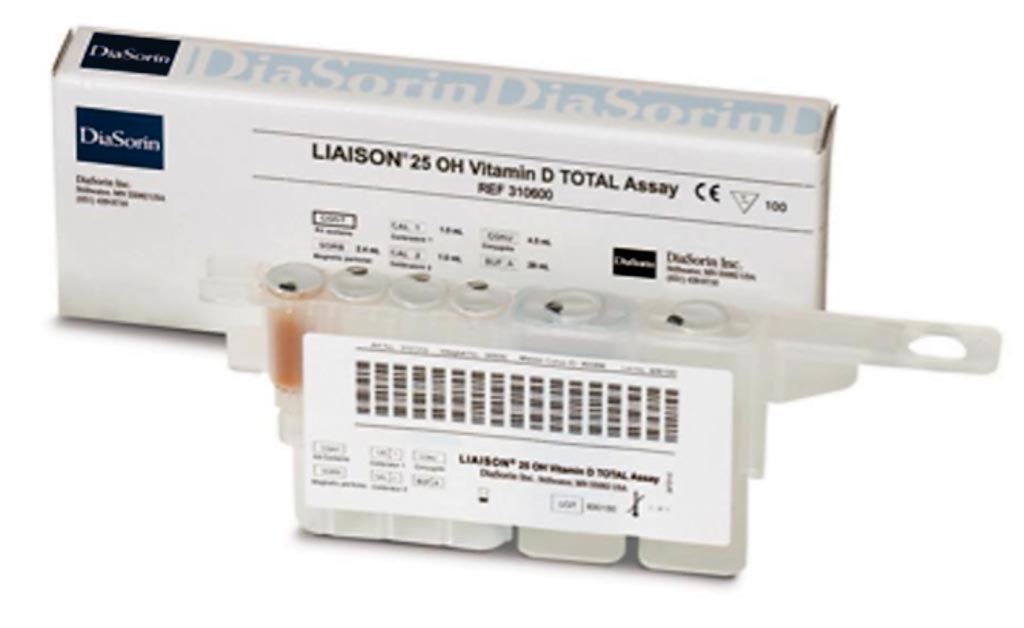Vitamin D Deficiency Associated with Impaired Muscle Strength
By LabMedica International staff writers
Posted on 05 Nov 2019
Maintaining muscle mass and function throughout life is a crucial component of successful ageing. The progressive loss of skeletal muscle mass, accompanied by a loss of muscle strength or performance, in aging, is a feature of primary sarcopenia.Posted on 05 Nov 2019
Globally, vitamin D deficiency is widespread particularly in older populations and optimizing vitamin D status may be a practical and cost-effective approach that supports skeletal muscle function. An important consideration is if older adults with vitamin D deficiency have impaired muscle function and, if so, would raising 25(OH)D status or reversing deficiency improve or preserve function.

Image: The LIAISON 25 OH Vitamin D TOTAL Assay is a fully automated assay measuring both D2 and D3 for a total result (Photo courtesy of Diasorin).
Clinical medicine scientists at Trinity College Dublin (Dublin, Ireland) analyzed data from 4,157 community-dwelling adults aged 60 years and over, from the English Longitudinal Study of Aging (ELSA). Two validated measures of muscle function were assessed, namely hand grip strength and the Short Physical Performance Battery (SPPB). Serum vitamin D was measured [25-hydroxyvitamin D] with a concentration <30 nmol/L classed as vitamin D deficient, the cut-off known to be associated with bone disease.
Serum 25(OH)D was assessed from fasting blood sample and analyzed using Diasorin Liaison 25-hydroxyvitamin D immunoassay (Diasorin, Saluggia, Italy). All assays were performed in duplicate, the CV values ranged from 8.7% to 9.4%. All blood sampling occurred from January 2012 to July 2013. Vitamin D status was classified with deficiency compatible with bone health risk defined as 25(OH)D <30 nmol/L, and insufficiency as <50 nmol/L. Season was categorized using the extended vitamin D calendar for summer (April–September) and winter (October–March).
The team reported that the prevalence of muscle weakness was twice as high among older adults with vitamin D deficiency (40.4%) compared with vitamin D adequacy (21.6%). Similarly, impaired 'muscle performance' was three times higher in older adults with vitamin D deficiency (25.2%) compared with vitamin D adequacy (7.9%). Based on more complex statistical analysis, the study showed that vitamin D deficiency significantly increased the likelihood of impaired muscle strength and performance.
Maria O'Sullivan, PhD, an Associate Professor and senior author of the study, said, “Our results show that vitamin D deficiency increased the likelihood of poor muscle function in older adults and confirms the protective effect of physical activity. Maintaining muscle function is incredibly important, and often overlooked, in promoting healthy ageing.” The study was published on October 15, 2019, in the journal Clinical Interventions in Aging.
Related Links:
Trinity College Dublin
Diasorin




 assay.jpg)


 Analyzer.jpg)






